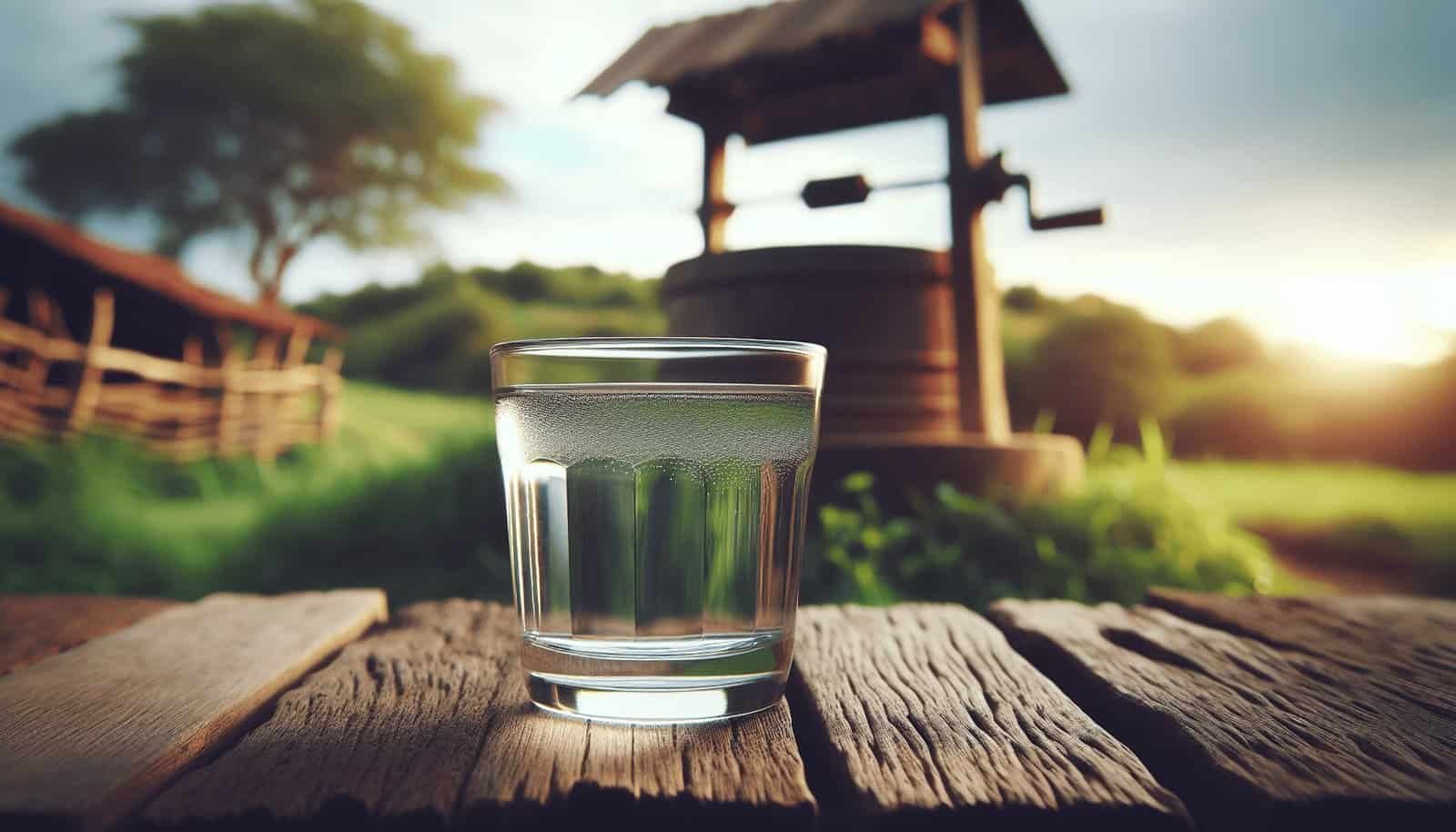Have you ever wondered where you can find guidelines on well water disinfection? If you’re managing a private well, you know the importance of maintaining water quality for the health and safety of your household. But finding reliable information and guidelines can sometimes be challenging. Let’s navigate through the essential guidelines and resources available to keep your well water clean and safe.

Understanding Well Water Disinfection
Before diving into where to find guidelines, it’s crucial to understand what well water disinfection is all about. Disinfection involves eliminating or reducing harmful microorganisms to ensure the water is safe for use. It’s an essential step in maintaining water quality, especially if you notice any contamination indicators like an unusual taste, color, or odor.
Why is Disinfection Necessary?
The need for disinfection arises mainly due to the potential for contamination from various sources like septic systems, agricultural runoff, or natural occurrences. Harmful bacteria, viruses, and parasites can all pose significant health risks if not managed properly. Regular disinfection can prevent diseases like dysentery and hepatitis which can arise from contaminated water.
Common Disinfection Methods
There are several methods for disinfecting well water, including chlorine treatment, ultraviolet light systems, and ozonation. Each method has its own set of advantages and considerations:
- Chlorine Treatment: The most common approach, using liquid chlorine or chlorine tablets, is effective in killing bacteria and some viruses. It’s relatively easy and inexpensive but may leave a residual taste or odor.
- Ultraviolet Light: This method is effective for eliminating bacteria and viruses without adding chemicals to the water. However, it requires electricity and a clear water flow to be effective.
- Ozonation: This involves using ozone gas to disinfect water. While effective, it is often more complex and costly, making it less common for private wells.
Where to Find Well Water Disinfection Guidelines
Fortunately, there are numerous resources available to guide you through the disinfection process. These include government agencies, research institutions, and community organizations dedicated to water safety.
Government Resources
Several government agencies offer detailed guidelines and resources on well water disinfection. Their information is generally comprehensive and reliable, making it an excellent starting point.
Environmental Protection Agency (EPA): The EPA provides guidelines and resources primarily focused on the safety of private wells. Their website offers extensive information about water quality testing, potential contaminants, and how to disinfect well water properly. Check out their publications for specific procedures.
Centers for Disease Control and Prevention (CDC): The CDC has dedicated sections for private well owners, offering guidelines on maintaining and disinfecting wells. They highlight the importance of regular testing and provide recommended steps for effective disinfection.
Local Health Departments: Many local or state health departments have guidelines tailored to specific geographic regions. It’s beneficial to reach out to them for localized advice related to your area’s typical water conditions or concerns.
Educational Institutions
Universities and research institutions often conduct studies and release findings on water quality and well maintenance. They can be incredible resources if you’re looking into more detailed information or research-backed guidance.
- Extension Services: Many agricultural colleges have extension services that provide resources for rural communities, including detailed guides on well maintenance and disinfection. These often include step-by-step instructions and community workshops.
Online Resources and Community Forums
In the digital age, a plethora of online platforms can provide useful insights and shared experiences about well water maintenance.
Forums and Discussion Groups: Websites like Reddit or community-specific forums allow you to connect with others who have private wells. You can ask questions, share experiences, and get recommendations on effective disinfection methods.
Blogs and Water Safety Websites: Many independent websites and bloggers offer practical advice and first-hand experiences on private well management. They often share tips, reviews, and personal stories, which can be quite insightful.

Newsletters and Email Lists for Private Well Updates
Staying informed with the latest news and updates related to private wells is essential. Subscribing to newsletters and email lists can keep you updated on the latest findings, technological advancements, and safety tips.
Recommended Newsletters
The National Groundwater Association (NGWA): NGWA offers newsletters that cover groundwater industry news, technology updates, and extensive resources related to well water management.
Safe Drinking Water Act Updates: Various organizations and governmental bodies release updates related to changes in legislation and new findings under the Safe Drinking Water Act, informing you about your rights and responsibilities.
Local Government or Health Department Newsletters: Subscribing to your local health department’s newsletters can provide region-specific updates that may affect your well water, such as local contamination issues or regulatory changes.
Professional Network Subscriptions
Joining professional networks can also provide you with periodic insights and updates.
- Water Quality Associations: Many associations offer memberships that include access to newsletters, webinars, and events focused on water quality and well management.

Creating a Well Maintenance Plan
Having consistent guidelines and resources is one thing, but applying them effectively with a maintenance plan is another. Here’s how you can create an efficient maintenance strategy for your well.
Regular Testing and Inspection
Testing your well water at least once a year is crucial. You might need more frequent testing if there are known issues in your area or if you notice changes in your water quality.
Annual Tests: Check for coliform bacteria, nitrates, and pH levels. Keep records of your results to track changes over time.
Post-Event Checks: Conduct tests after events like floods or when structural changes are made to your well or surrounding area.
Routine Disinfection
Regular disinfection helps prevent microbial issues before they start. Depending on your water usage and quality tests, this might be something you schedule annually or semi-annually.
Use of Chlorine: Plan for chlorine treatment at times when water usage is low, like before a weekend, to avoid high consumption during disinfection.
UV System Maintenance: If using UV systems, ensure you replace bulbs annually and maintain clear lenses for optimal effectiveness.
Record Keeping
Maintaining a log of inspections, water tests, and disinfection treatments ensures you have a history to refer back to when needed. This can be invaluable for diagnosing problems or when improvements are needed.

Addressing Common Disinfection Challenges
Sometimes, the disinfection process may not go as smoothly as planned. It’s important to anticipate challenges and know how to address them.
Stubborn Contaminants
Some contaminants might be resistant to basic disinfection methods.
- Iron Bacteria: If you’re dealing with iron bacteria, which can clog pipes and affect water taste, special treatments will be required, often involving chemical or physical interventions.
Equipment Failures
Regular equipment maintenance can prevent common issues that can affect the effectiveness of your disinfection efforts.
Pump Issues: Ensure your well pump is functioning properly. Regular maintenance checks can prevent failures that may lead to contamination.
Filtration System Maintenance: Make sure any additional filtration systems are maintained and filters replaced according to manufacturer specifications.

Conclusion
Taking proactive measures to disinfect and maintain your well water is a crucial aspect of being a responsible well owner. By utilizing the guidelines and resources from trusted authorities, engaging in continuous learning through newsletters and professional networks, and having a solid maintenance plan, you can ensure the safety and quality of your water. Stay informed, prepared, and don’t hesitate to reach out to professionals when in doubt. Remember, safe water is essential for a healthy home!
